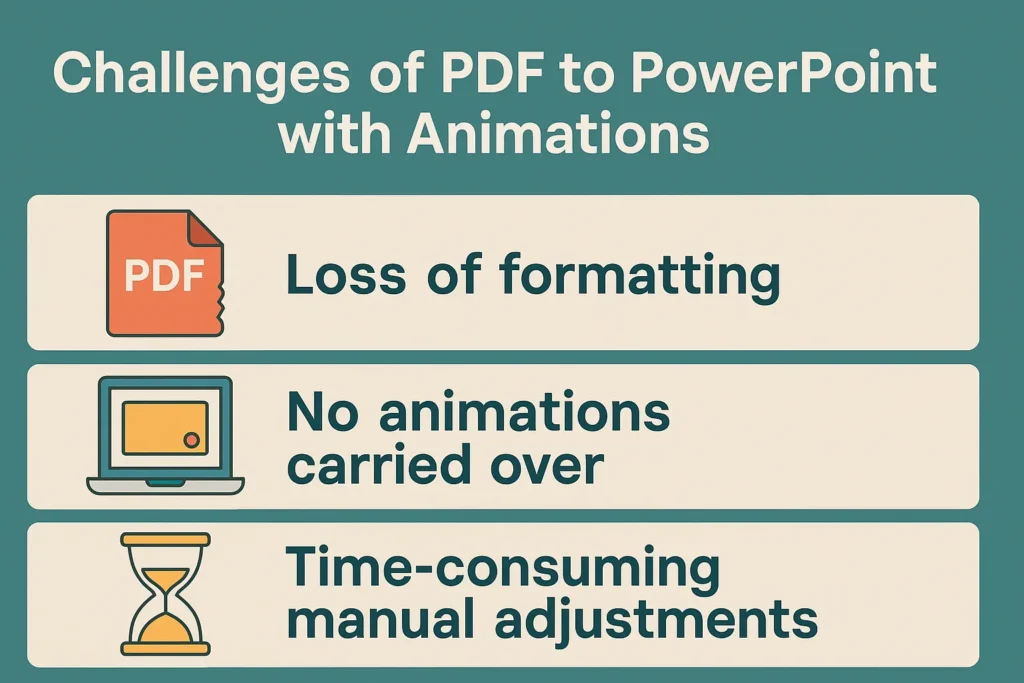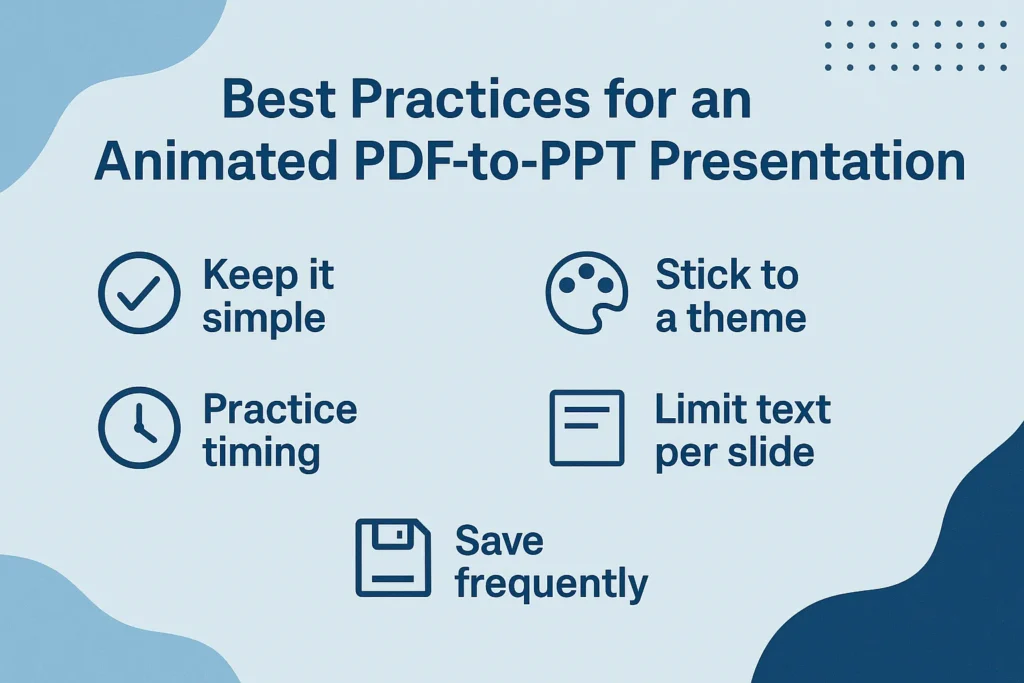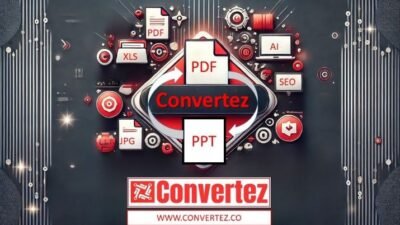In today’s digital era, content creation and presentation play a vital role in everything from education and training to marketing and corporate meetings. One common need that professionals and students alike encounter is the ability to convert a PDF file into an editable, animated PowerPoint presentation. But PDF to PowerPoint with Animations isn’t always straightforward.
If you’re wondering how to preserve or add animations during a PDF to PowerPoint with Animations, this guide will walk you through everything you need to know — from why you might need this conversion to step-by-step solutions and pro tips.
Why Convert PDF to PowerPoint with Animations?
PDF to PowerPoint with Animations are great for sharing documents while maintaining formatting. However, they are static, and editing them or turning them into engaging visual presentations can be tricky. On the other hand, PowerPoint (PPT) allows for dynamic content, transitions, animations, and interactivity, which makes it the go-to tool for presentations.
Here are a few common scenarios where you might need to convert a PDF to PPT:
- You received a training manual in PDF format and want to present it to an audience.
- A PDF brochure needs to be transformed into a visual pitch deck.
- You want to break down a research paper into animated, digestible slides.
- You need to repurpose PDF content for webinars or interactive courses.
Challenges of PDF to PowerPoint with Animations
While there are many online tools and software that PDF to PowerPoint with Animations, most of them don’t support animations. The biggest challenges include:
- Loss of formatting: Fonts, images, and layout often shift.
- No animations carried over: PDFs are static, so animations don’t exist natively in the file.
- Time-consuming manual adjustments: Even after conversion, you may need to manually add transitions and effects.
So, how do you achieve a high-quality, animated PowerPoint presentation starting from a static PDF?

Let’s explore your options.
Step-by-Step: PDF to PowerPoint with Animations
Step 1: Choose a Reliable PDF to PowerPoint with Animations
Start by using a tool that accurately converts your PDF into PowerPoint slides. Some of the best converters are:
- Adobe Acrobat Pro DC: Offers reliable conversion but no animation support.
- Smallpdf or Convertez.co: Great for basic PDF to PPT conversion.
- PDFtoPPT.com: Simple and user-friendly.
Once converted, you’ll receive a PowerPoint file that mirrors the layout of your PDF. However, animations still need to be added manually.
💡 Tip: If you’re working with a design-heavy or image-based PDF, ensure the converter retains image quality and text layers.
Step 2: Open the PDF to PowerPoint with Animations
After conversion, open the newly PDF to PowerPoint with Animations or an equivalent app like Google Slides. Take a few moments to:
- Check if each page from the PDF corresponds to a slide.
- Verify if the layout, fonts, and images are in place.
- Adjust any formatting errors that may have occurred during conversion.
Step 3: Add Animations and Transitions Manually
Since animations aren’t transferred from the PDF, you’ll need to add them manually.
Here’s how:
a. Add Slide Transitions
- Go to the Transitions tab in PowerPoint.
- Choose a transition style (e.g., Fade, Push, Wipe).
- Apply to each slide or click “Apply to All.”
b. Animate Text and Objects
- Select the text box or image you want to animate.
- Click on the Animations tab.
- Choose from Entrance, Emphasis, Exit, or Motion Path effects.
- Use the Animation Pane to control timing and order.
🎯 Pro Tip: Use subtle animations like “Fade” or “Appear” to keep your slides professional and engaging.
c. Customize Timing and Triggers
For more interactivity:
- Use Start on Click or With Previous options to control how animations play.
- Use Delays and Duration settings to create smooth flow.
- Add Triggers if you want elements to animate based on user action.
Step 4: Enhance with Multimedia
To bring your presentation to life, consider adding:
- Audio narration
- Embedded videos
- Hyperlinks to external content
- Interactive buttons
These elements are especially useful for educational modules or self-running presentations.
Tools That Support PDF to PPT with Animation (Partially or Fully)
While most converters do not retain animation, some PowerPoint plugins or advanced tools offer partial support.
1. iSpring Suite
- Converts PDF to PPT and allows advanced animation editing.
- Best for e-learning and corporate training content.
2. Adobe InDesign + PowerPoint
- Use InDesign to convert or recreate PDFs, then export to PPT.
- This workflow offers more animation control but requires advanced skills.
3. Canva Pro
- Import PDF content and convert into animated presentations.
- Export directly to PowerPoint or present within Canva.
Best Practices for an Animated PDF-to-PPT Presentation
Here are some tips to ensure your presentation is polished and effective:
✅ Keep it simple: Don’t overuse animations. Use them to highlight key points or guide the audience’s attention.
✅ Stick to a theme: Use consistent fonts, colors, and animation styles.
✅ Limit text per slide: Break long paragraphs from the PDF into bullets.
✅ Practice timing: If you’re presenting live, practice the flow of animations and transitions.
✅ Save frequently: PowerPoint may not auto-save, so keep backups.

Conclusion
Converting a static PDF to PowerPoint with Animations can breathe new life into your content. While no tool can fully automate animation transfer, with the right converter and a little manual tweaking, you can create an engaging, interactive presentation that truly stands out.
Whether you’re a student, trainer, marketer, or corporate presenter, this approach allows you to make your PDFs presentation-ready while harnessing the full power of PowerPoint.


